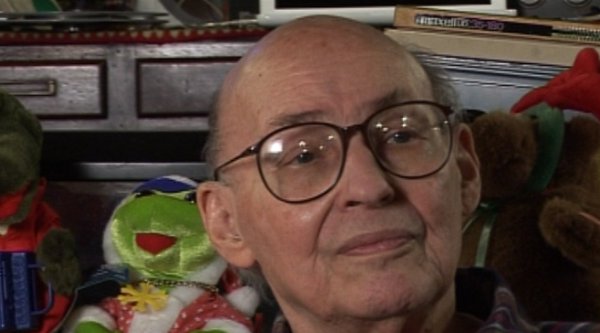NEXT STORY

Making the most useless machine
RELATED STORIES

NEXT STORY

Making the most useless machine
RELATED STORIES


|
Views | Duration | |
|---|---|---|---|
| 121. The problem with perceptrons | 1480 | 02:08 | |
| 122. Embarrassing mistakes in perceptron research | 1608 | 02:47 | |
| 123. Why we should publish failures in AI research | 1244 | 01:09 | |
| 124. Claude Shannon's world changing publication | 1 | 1520 | 01:37 |
| 125. Why I got on so well with Claude Shannon | 1719 | 02:09 | |
| 126. Making a ball bearing weapon | 1233 | 03:27 | |
| 127. Making the most useless machine | 8543 | 01:11 | |
| 128. A short history of chess playing machines | 1520 | 03:23 | |
| 129. Did the chess playing machines have an impact? | 1254 | 01:34 | |
| 130. The influence of Nicholas Rashevsky's mathematical biophysics | 1211 | 01:41 |


While I was there... I was only there a few weeks and one of the nice things about Bell Laboratories... again, we have to understand that at that time, the telephone company was a monopoly and it had the world at its fingertips. Everyone in the world had a telephone, even in those days. And there was no competition because... I don’t know what… I don't know what because… but that means that when we arrived at that place, somebody said: 'Don’t work on anything that won’t take 30 or 40 years.' You don’t hear that anymore and... one of the nice features of Bell Laboratories... it had a stockroom which had everything you could want. And I was once walking through the stockroom and I saw the balls of ball bearings and... there were tiny little balls that were so small, you could hardly see them. And there were… they went up to balls that were 2 or 3in in diameter that were pretty hard to lift. So, I got this idea. And I… I knew that if a large ball rolls into the small ball, then the small ball will bounce off twice as fast. It’s an interesting bit of physics coming from Newton’s laws. Imagine that you have this big ball and a small ball drops on it and hits it with a certain velocity, V. Then, it'll bounce off… and bounce off with velocity minus V. So if it’s going 20mph this way, it will be going 20mph when it comes off, or a little less. 'Cause the big ball… the big ball won’t move much. So all of a sudden, 20mph has turned into a change of 40mph.
Well, it turns out that the same thing will work if the little ball is standing still and the big ball is moving. So suppose you have a little ball here and a big ball hits it, guess… and its 20 mph. Guess how fast the little ball will go? 40, or 39. Well, if they’re all… if they're not quite so different, what will happen is the little... if the big ball and... you have a slightly smaller one, it will go somewhat faster. And I realized that if you made a whole chain of balls, like 2in and 1¾ and 1½ and so forth, that the more balls you have – and if they’re smoothly tapered – the greater the gain in speed will be. So, I got one of every size and I put them in a rack and I rolled this great big ball into this next one. And the little ball disappeared and went through the window of… across the hall. And that was the office of another great scientist named Hendrik Bode, who discovered some important new phenomenon in electrical engineering. Luckily, he wasn’t there. I don't think it would have killed anyone but...
Marvin Minsky (1927-2016) was one of the pioneers of the field of Artificial Intelligence, founding the MIT AI lab in 1970. He also made many contributions to the fields of mathematics, cognitive psychology, robotics, optics and computational linguistics. Since the 1950s, he had been attempting to define and explain human cognition, the ideas of which can be found in his two books, The Emotion Machine and The Society of Mind. His many inventions include the first confocal scanning microscope, the first neural network simulator (SNARC) and the first LOGO 'turtle'.
Title: Making a ball bearing weapon
Listeners: Christopher Sykes
Christopher Sykes is a London-based television producer and director who has made a number of documentary films for BBC TV, Channel 4 and PBS.
Tags: Bell Laboratories, Hendrick Bode
Duration: 3 minutes, 28 seconds
Date story recorded: 29-31 Jan 2011
Date story went live: 13 May 2011